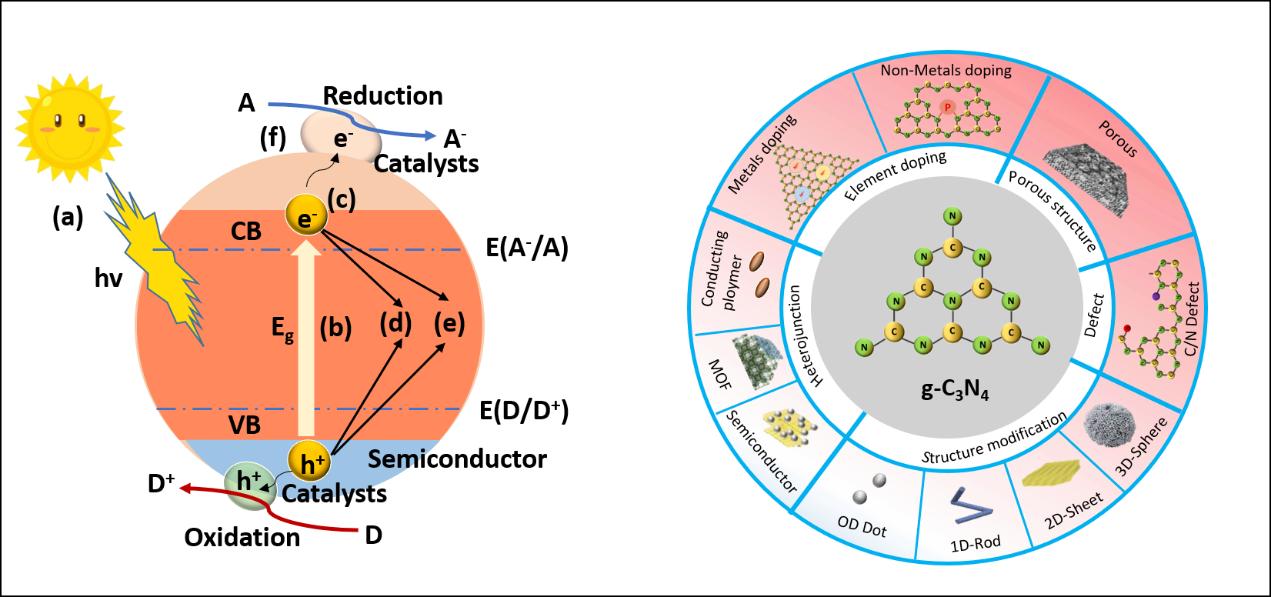 Open Access
Open Access
REVIEW
g-C3N4 Derived Materials for Photocatalytic Hydrogen Production: A Mini Review on Design Strategies
1 Faculty of Geosciences and Environmental Engineering, Southwest Jiaotong University, Chengdu, 611756, China
2 Analysis and Testing Center, South China Normal University, Guangzhou, 510006, China
3 MOE Key Laboratory of Theoretical Chemistry of the Environment, School of Chemistry, South China Normal University, Guangzhou, 510006, China
* Corresponding Author: Kai Su. Email:
Journal of Renewable Materials 2022, 10(3), 653-663. https://doi.org/10.32604/jrm.2022.018556
Received 02 August 2021; Accepted 20 August 2021; Issue published 28 September 2021
Abstract
Hydrogen production through solar energy is one of the most important pathways to meet the growing demand of renewable energy, and photocatalyst participation in solar hydrolytic hydrogen production has received great attention in recent years in terms of low cost, high efficiency, and flexible design. Particularly, g-C3N4 (Graphitic-like carbon nitride material), as a unique material, can catalyze the hydrogen production process by completing the separation and transmission of charge. The easily adjustable pore structure/surface area, dimension, band-gap modulation and defect have shown great potential for hydrogen production from water cracking. In this review, the most recent advance of g-C3N4 including the doping of metal and non-metal elements, and the formation of semiconductor heterojunction is highlighted. The main modification strategies and approaches for the design of g-C3N4 for hydrogen production, as well as the influence of various materials on hydrogen evolution regarding the photocatalysis mechanism and advantages brought by theoretical calculations are specially and briefly illustrated. Potential design pathways and strategies of g-C3N4 are discussed. In addition, current challenges of hydrogen production from g-C3N4 water splitting are summarized and can be expected.Graphic Abstract

Keywords
Cite This Article
Citations
 Copyright © 2022 The Author(s). Published by Tech Science Press.
Copyright © 2022 The Author(s). Published by Tech Science Press.This work is licensed under a Creative Commons Attribution 4.0 International License , which permits unrestricted use, distribution, and reproduction in any medium, provided the original work is properly cited.


 Submit a Paper
Submit a Paper Propose a Special lssue
Propose a Special lssue View Full Text
View Full Text Download PDF
Download PDF

 Downloads
Downloads
 Citation Tools
Citation Tools
